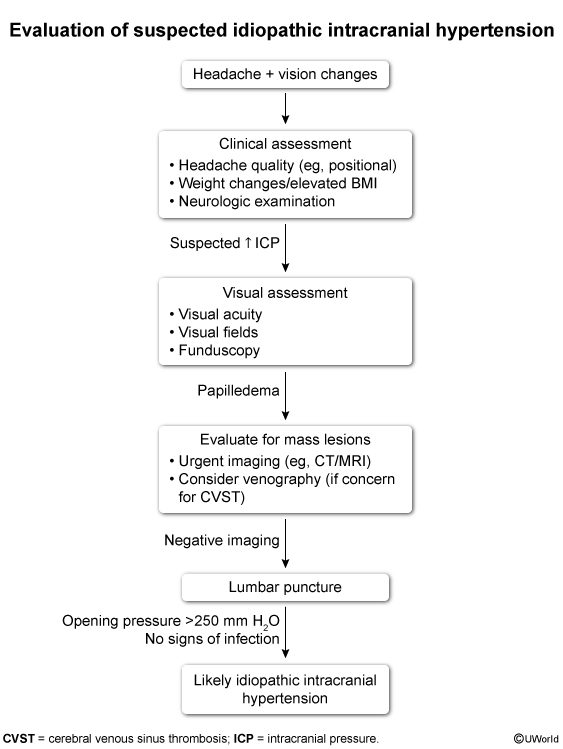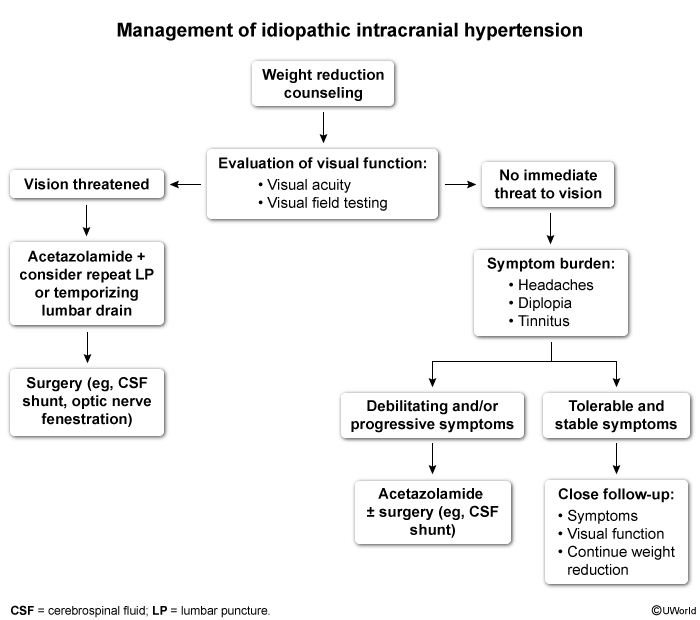Idiopathic Intracranial Hypertension (Pseudotumor Cerebri)
Article Sections
Introduction
Idiopathic intracranial hypertension (IIH), also known as pseudotumor cerebri, is a condition characterized by increased intracranial pressure (ICP) without an underlying intracranial mass lesion or hydrocephalus.
Pathophysiology
The pathophysiology of IIH likely involves increased intracranial venous pressure due to impaired reabsorption of cerebrospinal fluid (CSF) by the arachnoid granulations or CSF lymphatic drainage sites; obesity-related increased abdominal and intracranial venous pressure is another proposed mechanism.
Risk factors
Several factors have been identified as increasing the risk of developing IIH, including:
- Women of childbearing age
- Obesity (BMI ≥30 kg/m²) and/or recent weight gain
- Use of tetracyclines, vitamin A and its metabolites (eg, retinoids, isotretinoin), and growth hormone (due to various effects on CSF flow or metabolism)
Clinical presentation
The most common signs and symptoms of IIH include:
Continue Learning with UWorld
Get the full Idiopathic Intracranial Hypertension (Pseudotumor Cerebri) article plus rich visuals, real-world cases, and in-depth insights from medical experts, all available through the UWorld Medical Library.
Figures



Images
